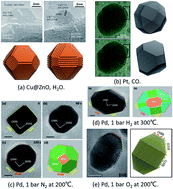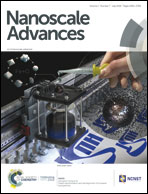Multiscale atomistic simulation of metal nanoparticles under working conditions
Abstract
With the fast development of in situ experimental methodologies, dramatic structure reconstructions of nanomaterials that only occur under reaction conditions have been discovered in recent years, which are critical for their application in catalysis, biomedicine, and biosensors. A big challenge for theoreticians is thus to establish reliable models to reproduce the experimental observations quantitatively, and further to make predictions beyond experimental conditions. Herein, we briefly summarize the recent theoretical advances involving the quantitative predictions of equilibrium shapes of metal nanoparticles under reaction conditions and the real-time simulations of nanocrystal transformations. The comparisons between the theoretical and experimental results are presented. This minireview not only helps researchers understand the in situ observations at the atomic level, but also is beneficial for prescreening and optimizing the NPs for practical use.

- This article is part of the themed collections: Editor’s Choice: Computational studies of nanomaterials for energy, catalysis and electronics and Recent Review Articles


 Please wait while we load your content...
Please wait while we load your content...